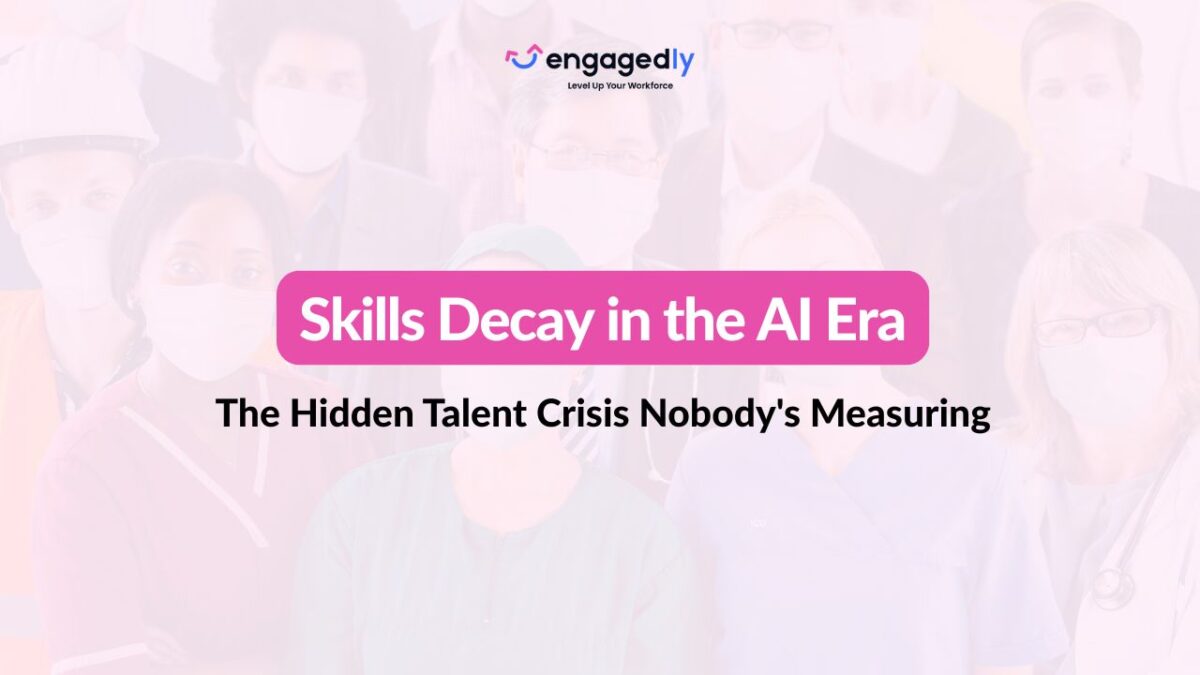Artificial Intelligence (AI) is rapidly reshaping how organizations manage their people, bringing new efficiency and insight to every stage of the employee lifecycle. HR professionals across industries – from tech and finance to retail and manufacturing – are leveraging AI to attract, develop, and retain talent in smarter ways than ever before.
In fact, about 45% of organizations currently use AI in HR functions, and a staggering 92% of companies plan to increase AI investments in HR over the next three years. This surge in adoption isn’t just about automating routine tasks; it’s about transforming the talent management paradigm.
AI tools can enhance candidate and employee experiences, reduce bias, improve decision-making with data, and even predict future workforce trends.
As we look at both current trends and the future outlook, here are 21 ways AI is revolutionizing talent management – spanning recruiting, onboarding, performance, learning and development, diversity and inclusion, workforce planning, employee engagement, and more.
1. Intelligent Candidate Sourcing and Outreach
AI is dramatically improving how organizations source talent. Advanced algorithms can scan millions of online profiles, resumes, and social media data to identify promising passive candidates who match a role’s requirements.
Instead of waiting for applicants, recruiters can proactively target talent using AI-driven recommendations. For example, talent intelligence platforms use machine learning to find candidates with the right skills and even predict cultural fit by analyzing online footprints. The result is a wider, more qualified talent pool at the top of the funnel.
Companies are seeing tangible benefits: 44% of organizations now use AI for recruitment, and AI-driven tools have been shown to cut recruitment costs by up to 30% while reducing time-to-hire by 50%. In practice, this means roles are getting filled faster with better-matched candidates, giving organizations across industries a competitive edge in the war for talent. Discover how Engagedly’s AI powered platform streamlines HR processes, elevates performance outcomes, and enhances every stage of the employee lifecycle.
2. Automated Resume Screening and Shortlisting
One of the earliest and most widespread uses of AI in talent acquisition is automating resume screening. AI-powered Applicant Tracking Systems (ATS) can automatically filter and rank incoming resumes based on predefined criteria – such as skills, experience, and keywords – far faster than any human.
This dramatically speeds up the initial selection: 75% of recruiters say AI tools help screen resumes faster, and organizations report that AI filtering can weed out about 40% of job applications before a human ever reviews them. By eliminating obvious mismatches, recruiters can focus their time on the most promising candidates.
Moreover, modern AI screening tools are getting smarter at evaluating soft skills and potential by analyzing writing style or even video introductions. The current trend is moving beyond simple keyword matching to more nuanced “fit” scoring. For HR teams drowning in applications, these AI screeners have become invaluable for handling volume without sacrificing quality.
Looking ahead, as algorithms improve, we can expect even more accurate shortlists and perhaps AI systems that provide a rationale for why each candidate is a good match – enhancing transparency in the hiring process.
3. AI-Augmented Interviews and Assessments
AI is transforming how organizations assess candidates through interviews and testing. A prominent example is the rise of AI-powered video interviews: candidates record responses to preset questions on camera, and AI algorithms evaluate their answers (both words and, in some cases, facial expressions or tone) to gauge traits like communication skills, empathy, and problem-solving.
Companies have started to trust these tools at scale. About 58% of companies now use AI for video interview analysis, harnessing AI to increase hiring accuracy by identifying subtle cues and patterns humans might miss. The impact can be remarkable – Unilever, for instance, reinvented its early-career hiring by having applicants play neuroscience-based games and complete video interviews, which were then analyzed by AI.
This approach allowed Unilever to filter out 80% of candidates automatically and focus on the top 20%. The results? A 90% reduction in time-to-hire, £1 million in annual savings, and a 16% increase in diversity of hires.
Across industries, AI-driven assessments (including game-based assessments and online tests scored by AI) are making hiring more data-driven. These tools can predict job performance with greater objectivity, and as they evolve, we expect interviews to increasingly become a human-AI collaboration – AI offering data insights while human managers make the final judgment calls.
4. Chatbots for Candidate Engagement and Recruiting
Recruiting doesn’t stop at sourcing and screening – maintaining communication with candidates is crucial. Here, AI chatbots have emerged as game-changers in talent acquisition.
AI-powered recruiting chatbots can handle routine inquiries, provide application status updates, and even schedule interviews, all through natural conversational interfaces available 24/7. This always-on engagement significantly enhances the candidate experience.
Applicants get instant answers (for example, details about company culture or benefits) without waiting for a recruiter’s email. These chatbots can also nudge candidates to complete forms or assessments, keeping the pipeline flowing. The majority of candidates are on board with this technology:
62% of job seekers are comfortable interacting with AI in the hiring process, and in one study 73% of candidates couldn’t even tell they were interacting with a bot rather than a human.
Real-world use spans many industries – from high-volume retail hiring where bots pre-screen and schedule store associate interviews, to tech companies where chatbots help woo hard-to-get software engineers by answering technical role questions.
By handling thousands of candidate conversations simultaneously, AI chatbots ensure no applicant falls through the cracks, and recruiters can focus on building relationships with the most interested and qualified talent.
It’s a trend that’s only growing: by some predictions, 75% of job seekers may prefer AI-driven interactions for the initial stages by 2025, due to the faster feedback
5. Streamlined Onboarding with Virtual Assistants
Once a candidate becomes a new hire, AI continues to add value in the onboarding process. Joining a new company typically involves heaps of paperwork, training modules, and FAQs. AI-powered onboarding systems and virtual HR assistants are making this transition smoother and more personalized.
For example, many organizations now deploy chatbots or digital assistants that guide new employees through orientation step-by-step – setting up IT accounts, explaining benefits enrollment, and introducing company policies in an interactive manner.
These assistants are available around the clock for questions like “How do I set up direct deposit?” or “Where do I find the org chart?”, providing instant answers that would otherwise tie up HR staff. It’s no surprise that 92% of HR departments now direct new employees to chatbots or other AI tools for information during onboarding.
The benefits are twofold: new hires feel supported (no question is too small to ask the bot), and HR teams are freed from answering repetitive queries. AI can also tailor the onboarding journey based on role or experience level – for instance, suggesting specific training modules if the system knows a hire lacks certain skills. As a result, employees reach productivity faster and with less first-week frustration.
The future of onboarding is likely to see more personalized “learning paths” for each new hire crafted by AI and predictive check-ins (e.g., the system might flag if a remote new hire hasn’t engaged with certain materials and alert HR to intervene). Overall, AI makes onboarding more engaging and efficient, ensuring new talent feels welcomed and equipped from day one.
6. Personalized Learning and Development Programs
Learning and development (L&D) is another core aspect of talent management being revolutionized by AI. Traditional one-size-fits-all training is giving way to AI-driven personalized learning. Modern Learning Management Systems (LMS) leverage AI to recommend courses, articles, or stretch assignments tailored to an individual’s role, skill gaps, and career goals.
For example, if an employee in marketing wants to develop data analytics skills, an AI-enabled platform might suggest specific data science courses, relevant webinars, or even connect them with a data mentor internally. This personalization keeps employees more engaged in L&D because the content is relevant and pitched at the right level.
The impact on engagement and retention is significant – organizations using AI in training report a 72% increase in employee engagement with learning content and improved knowledge retention by 60%. AI doesn’t just push content; it also adapts in real-time. Think of an AI tutor that notices where a learner struggles in an online module and then provides additional practice or simplifies the explanation accordingly.
Industries like finance and healthcare are using these adaptive learning systems to keep their workforce’s skills up-to-date in fast-moving fields. Moreover, AI can analyze skill inventories across the company to identify talent gaps and then prompt targeted development programs to fill them.
As we approach the future, experts predict the majority of corporate training programs will be AI-driven by 2025, meaning most employees will have a “personal learning assistant” guiding their ongoing development. For HR, this results in a more skilled workforce and better ROI on L&D spend, as training is efficient and impactful. See how Engagedly brings AI into core people operations to simplify workflows, support data informed decisions, and optimize talent management.
7. AI-Driven Career Pathing and Internal Mobility
In the past, mapping out career paths or finding internal candidates for new roles was often an informal or manual process. AI is changing that by enabling intelligent internal mobility. Companies are deploying AI platforms (sometimes called talent marketplaces) that analyze employees’ skills, experiences, and interests and then match them with internal job openings, stretch assignments, or mentorship opportunities.
This means instead of an employee having to network or rely on chance, they can receive proactive recommendations: “Your profile matches this new project team” or “There’s a marketing analyst opening that fits your skills growth.”
Such AI-driven career pathing not only helps employees grow within the company but also significantly boosts retention – when people see a future for themselves at the organization, they’re more likely to stay.
Data backs this up: personalized, AI-guided career development plans have been shown to increase retention by up to 20%, and AI-powered internal mobility tools can reduce employee attrition by 35% by ensuring talent finds new challenges internally instead of leaving for external opportunities.
A real-world example is IBM, which uses an AI career assistant to recommend next roles to employees and even suggest what training they’d need for those roles, effectively charting out career moves. Other companies partner with platforms like Gloat or Eightfold.ai to power internal job marketplaces.
In all industries – whether a bank encouraging tellers to pursue HQ roles, or a tech firm helping engineers move into product management – AI is making career progression more transparent and data-driven. This transforms talent management by breaking down silos and unlocking the full potential of the workforce already on board.
AI is reinventing performance management from the old annual review model to a more continuous, data-rich process. Today’s performance management systems increasingly incorporate AI to monitor objectives, gather feedback, and even coach employees in real time.
For instance, AI can analyze an employee’s work output (sales figures, project deliverables, customer feedback scores, etc.) and compare it against goals or peer benchmarks to provide instant insights.
Managers might get alerts like, “This salesperson is 10% below target this quarter; here are suggested actions,” or an employee might receive automated nudges: “You’ve completed 3 of 5 training goals for this year, keep going!” These systems can also digest feedback from multiple sources – peer reviews, client comments, etc. – and summarize patterns for managers.
Importantly, AI helps remove bias: it can be programmed to ignore irrelevant demographic data and focus purely on performance metrics, and it can flag language in feedback that might indicate bias.
Research shows AI can reduce bias in performance evaluations by about 25%, supporting a fairer review process. Adoption is growing fast: 58% of organizations now use AI for performance management, and 65% of HR professionals believe it makes the process more efficient and objective.
Some companies have even introduced AI “coaches” – for example, an app that listens (with consent) to sales calls and then gives the employee tips on how to improve communication or product knowledge. While managers and HR still play a critical role in mentoring and decision-making, AI provides a powerful assist by crunching the data continuously in the background.
The future likely holds performance dashboards that can predict an employee’s trajectory, identify who might be promotion-ready, and suggest personalized development plans to maximize everyone’s potential.
9. Data-Driven Succession Planning and Leadership Development
Succession planning – identifying and grooming future leaders – has traditionally been a mix of gut feeling and manual tracking of high performers. AI is elevating this to a more scientific approach. By analyzing a wide range of data (performance history, personality assessments, 360-degree feedback, career progression, etc.), AI can help predict which employees have high leadership potential and what gaps they need to fill to assume larger roles.
For example, an AI system might learn that successful leaders in a company often have a mix of cross-functional experience and certain behavioral competencies; it can then scan the workforce to flag individuals who fit that success profile but maybe haven’t been noticed.
In practice, this has proven effective – AI-based evaluations have been able to predict leadership potential with up to 80% accuracy according to some HR analytics studies. This kind of insight allows HR to be proactive: instead of scrambling when a senior person leaves, companies have a data-backed bench of successors and targeted development plans for them long beforehand.
A case in point: PepsiCo used an AI-driven talent analytics tool to identify future leaders earlier in their careers and then created tailored training programs for them, resulting in a stronger leadership pipeline. AI can also simulate scenarios – e.g. “If X VP left tomorrow, who are the best internal candidates ready now, and who could be ready in a year with some mentoring?” – providing actionable succession roadmaps.
As organizations become more data-rich, expect AI to play an even bigger role in leadership development, perhaps even using predictive analytics to suggest not just who could lead, but what style of leadership might be effective given trends in the company or industry. This ensures continuity and that the next generation of leaders is prepared in alignment with the company’s future needs.
10. Predictive Retention and Turnover Analytics
Employee turnover is costly and disruptive – and AI is now giving HR an upper hand in predicting and preventing it. Predictive analytics for retention involves AI algorithms analyzing factors that correlate with employees leaving, such as tenure in role, promotion wait times, pay relative to market, engagement survey scores, manager quality, and even sentiments expressed in internal communication (where appropriate and privacy-compliant).
By crunching these disparate data points, AI can generate “flight risk” scores for employees and identify those who might be likely to resign in the near future. Armed with this knowledge, HR and managers can intervene with retention strategies (career discussions, adjustments in role or salary, etc.) before it’s too late.
The accuracy of these models is impressive – in some cases, they can anticipate employee turnover with nearly 87% accuracy. One famous example is IBM: using its Watson AI, IBM claims it can predict which employees are likely to leave with 95% accuracy, a program that reportedly helped save the company around $300 million in retention costs by enabling timely interventions.
This kind of AI-driven insight is applicable across industries: a hospital might use it to retain nurses by identifying early signs of burnout; a software firm might catch engineers who feel stuck in their roles. The future of retention analytics might integrate even more data (perhaps analyzing external job market trends or social media indicators of job search activity) to give a holistic view of retention risk.
For HR professionals, these predictive tools transform retention from a reactive task to a proactive strategy, allowing them to focus efforts on key individuals or teams and address issues (like workload, lack of advancement, or compensation) that the AI has flagged as drivers of attrition. In short, AI is helping companies keep their talent by seeing the warning signs well in advance.
Conclusion
AI is no longer a futuristic concept in HR—it’s a present-day game changer. From recruitment and onboarding to performance management and retention, AI is driving a fundamental shift in how organizations attract, engage, and grow their people. It’s enabling HR teams to move beyond manual, one-size-fits-all processes and toward smarter, data-driven, and deeply personalized talent strategies.
The numbers speak for themselves: faster hiring, lower costs, improved engagement, and better retention outcomes. But beyond the metrics, AI empowers HR to focus more on the “human” in human resources—spending less time on administrative work and more time on building culture, supporting people, and driving business impact.
As AI continues to evolve, the companies that invest in these technologies today will be the ones shaping the future of work tomorrow. Talent management is being redefined—and with AI, HR leaders are better equipped than ever to lead that transformation.
Author
Srikant Chellappa
CEO & Co-Founder of Engagedly
Srikant Chellappa is the Co-Founder and CEO at Engagedly and is a passionate entrepreneur and people leader. He is an author, producer/director of 6 feature films, a music album with his band Manchester Underground, and is the host of The People Strategy Leaders Podcast.





